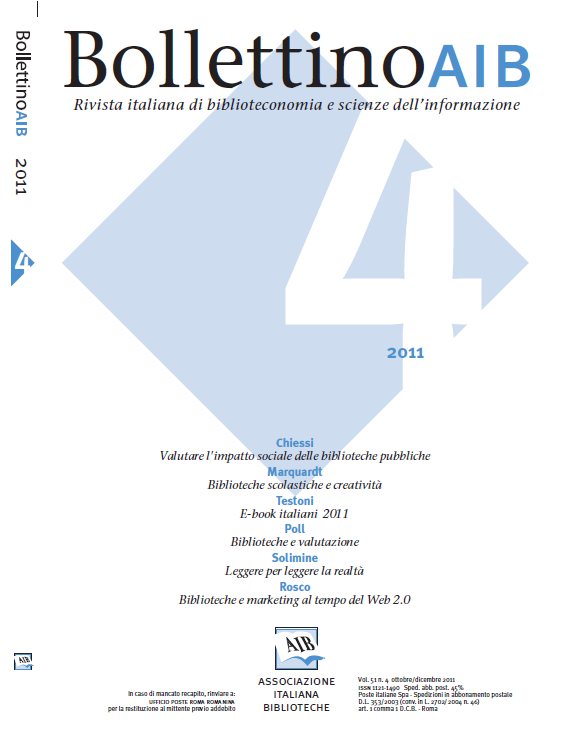Italian e-books: what “bibliodiversity”? A 2011 survey
Main Article Content
Abstract
An e-book is a digital object with textual and/or other content, resulting by the integration of the familiar concept of “book” with features that can be provided in an electronic environment.
The Italian market seems to appreciate this support, though some structural features – as the poor diffusion of the Internet and e-commerce within the country – do not let the e-book go widespread. This survey covers a broad selection of “atomic retail” platforms (online stores) and digital libraries that offer the public domain digital books for free.
The commercial platforms (online stores) offer an average 10.000 to 14.000 titles; in digital libraries you can find an average 2.300 Italian books – except for Google books, that offers 1.600.000 full text books in Italian. The Italian commercial platforms offer books by up to 400 publishers, and the ADE e- book protection is the most popular within the online stores: the watermark (“social DRM”) stands at 35%, and the non-protected e-books at 10%.
An important essay by Marcia Bates focuses on three seeking information strategies: searching, browsing and monitoring. This paper investigates the application of these categories according to the user experience of the e-book platforms.
Unlike digital libraries, online stores do not ask a demanding search experience, requiring the exact knowledge of the user’s own information needs: they provide several research channels and a strong customisation of the search experience. Vice versa digital libraries offer less browsing channels and backings to the user who does not have a clear idea about his own information needs. Finally, when he’s monitoring, the user maintains a back-of-the-mind alertness for things that interest him, but he does not feel such a pressing need that engages him in an active effort to gather the information he is interested in. In digital libraries the user has more chances to gather relevant and specific information – but he has to “click” one more time. On the contrary, in the commercial platforms the specific information/issues are fewer but much more handy.
Article Details

This work is licensed under a Creative Commons Attribution-ShareAlike 4.0 International License.
